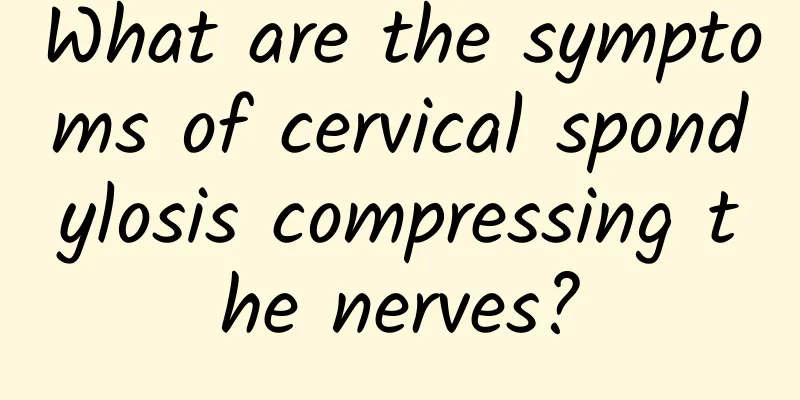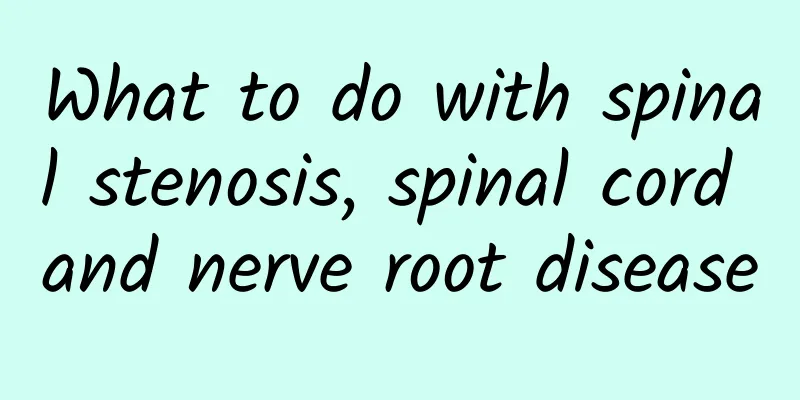What are the symptoms of cervical spondylosis compressing the nerves?

|
Cervical spondylosis compresses the nerves and can cause symptoms such as neck pain, arm numbness, and dizziness, which can affect daily life in severe cases. Treatments include medication, physical therapy, and surgery, which should be selected based on the condition. 1. Common symptoms of cervical spondylosis compressing nerves When cervical spondylosis compresses the nerves, the main symptoms are neck pain and stiffness, which may radiate to the shoulders and arms. Patients often feel numbness and weakness in their arms, and even have difficulty moving their fingers. Some patients also experience symptoms such as dizziness, headaches, and blurred vision, which may affect walking balance in severe cases. These symptoms are related to the degree and location of nerve compression, and require prompt medical attention for a clear diagnosis. 2. Causes of Nerve Compression by Cervical Spondylosis The causes of cervical spondylosis compressing nerves include long-term bad posture, cervical degenerative lesions, trauma, etc. Long-term use of mobile phones or computers with the head lowered will increase the load on the cervical spine and accelerate the degeneration of the intervertebral disc. With age, the water content of the cervical intervertebral disc decreases, and the elasticity decreases, which can easily compress the nerve roots. Neck trauma or chronic strain may also cause symptoms of nerve compression. 3. Treatment methods Drug treatment: Commonly used drugs include nonsteroidal anti-inflammatory drugs such as ibuprofen, muscle relaxants such as chlorzoxazone, and neurotrophic drugs such as methylcobalamin, which can relieve pain and nerve inflammation. Physical therapy: cervical traction, hot compress, electrotherapy and other methods can relieve nerve compression and improve local blood circulation. Surgical treatment: For patients with severe nerve compression or who do not respond to conservative treatment, surgical methods such as anterior cervical decompression and fusion, and posterior laminoplasty can be considered. 4. Daily care suggestions Maintain a correct sitting posture and avoid lowering your head for long periods of time. Perform appropriate neck stretching exercises, such as slowly turning your neck back and forth. Choose a pillow of moderate height when sleeping to avoid your neck hanging in the air. Eat more foods rich in calcium and vitamin D, such as milk and fish, which are good for bone health. Symptoms of cervical spondylosis compressing nerves vary, and early detection and treatment are crucial. Symptoms can be effectively relieved through medication, physical therapy, surgery, and other methods. Paying attention to posture adjustment and neck exercises in daily life can help prevent the condition from getting worse. If symptoms persist or worsen, seek medical attention in a timely manner to avoid delaying treatment. |
<<: How many people suffer from intrahepatic bile duct stones?
>>: What kind of tea is good for breast cysts?
Recommend
Hyperplasia of breast tissue can be seen in both breasts
Bilateral breast tissue hyperplasia is a common b...
What are the sequelae of a one and a half year old febrile convulsion?
A febrile seizure in a one-and-a-half-year-old ch...
Are there any symptoms of adrenal tumors? Is it serious?
Adrenal tumors can cause a variety of symptoms, s...
Can I drink honey water when I have breast nodules?
Breast nodules can be treated with a moderate amo...
Can Mayinglong Musk Hemorrhoid Ointment be used for perianal abscess?
Perianal abscesses cannot be treated with Mayingl...
Can a grade 2 breast cyst turn into cancer?
Can a grade 2 breast cyst turn into cancer? Grade...
How to treat multiple breast cysts
The treatment of multiple breast cysts should be ...
Why are women more likely to get gallstones?
Women are more likely to develop gallstones, whic...
What are the causes of gallstones?
The cause of gallstones is often related to genet...
What are the clinical manifestations of urethritis?
Urethritis is a common disease, which refers to i...
Are adrenal tumors easy to treat?
The treatment effect of adrenal tumors is closely...
Is breast cyst extraction a good thing or a bad thing?
Breast cyst drainage is usually safe and benefici...
What causes ankylosing spondylitis?
Ankylosing spondylitis mainly affects the spine, ...
Treatment of myofasciitis syndrome
Treatments for myofasciitis syndrome include medi...
What are benign lesions?
Benign lesions, as the name suggests, are those t...









